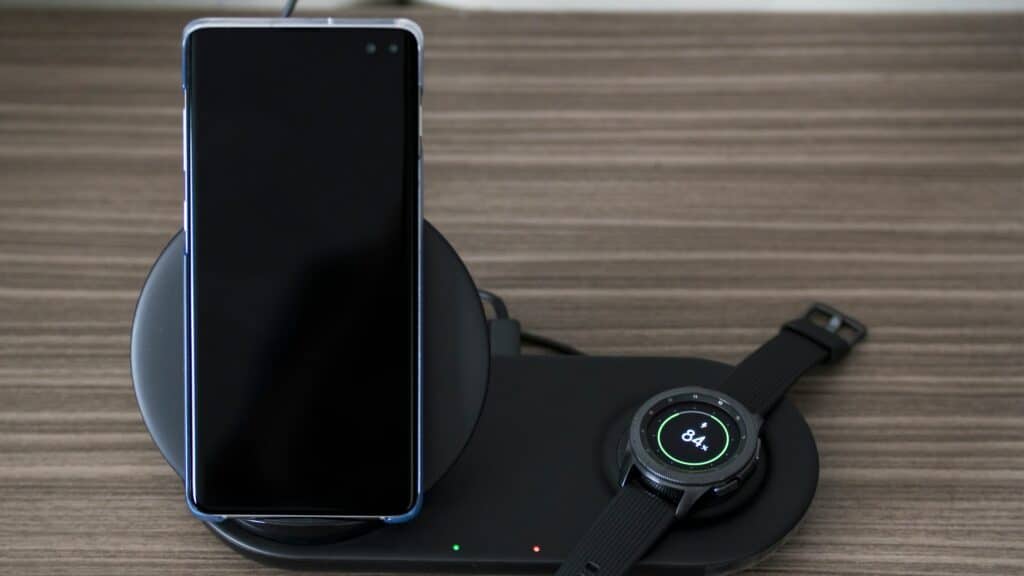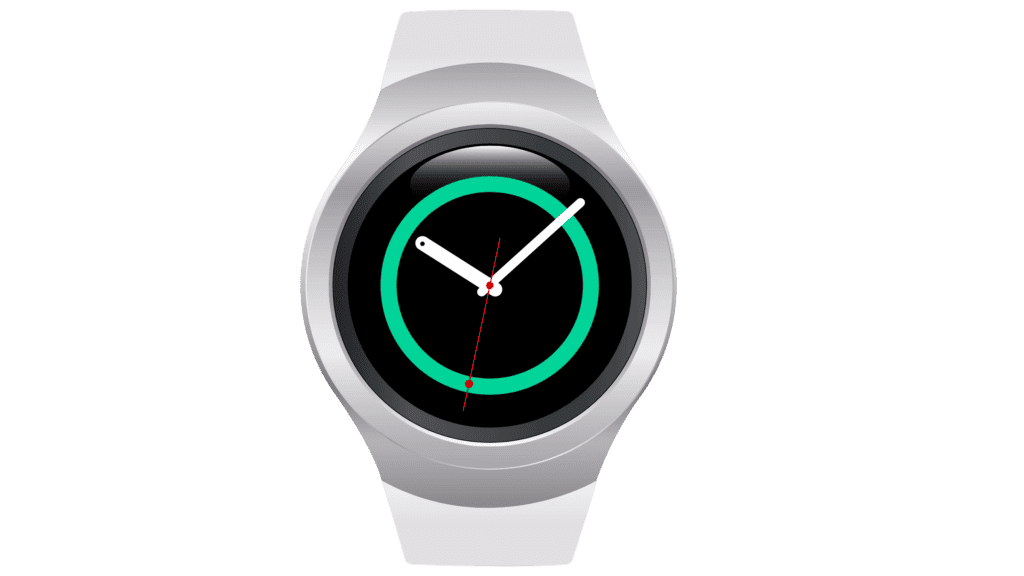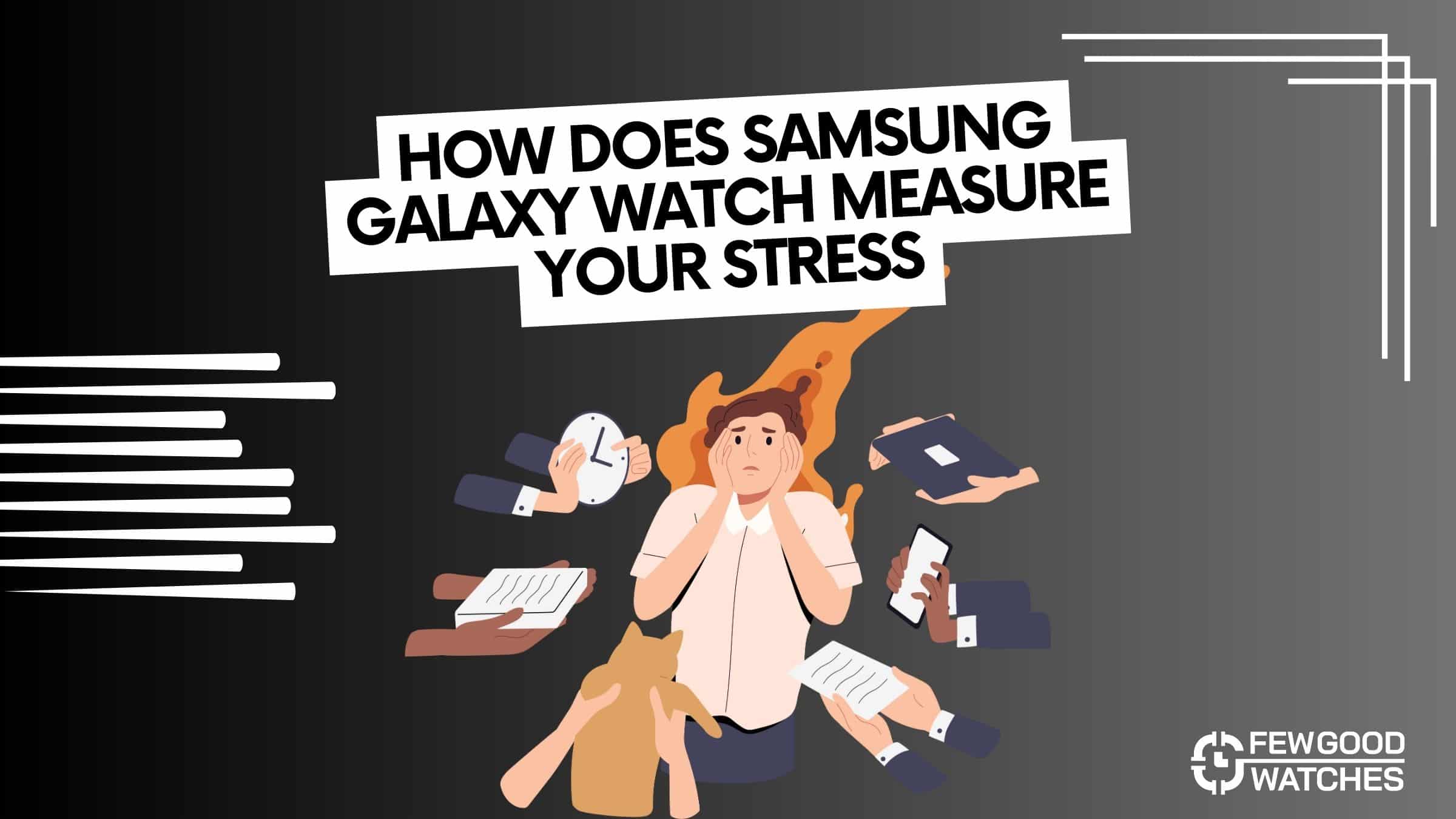The Samsung Galaxy Watch has long remained the pioneer when it comes to introducing new features to Android smartwatches. Even trading blows with the Apple watch, it carries some distinct features which separate it from Apple’s offerings. One such feature is the ability to measure your stress using just the reading taken from your watch’s sensors.
This begs the question, how does the Samsung Galaxy watch actually measure your stress? How accurate is its reading?
The Samsung Galaxy Watch measures your stress through a combination of heart rate monitoring and an advanced stress-tracking algorithm. The watch analyzes your heart rate variability to gauge your stress levels. The accuracy can vary from person to person.
Let’s dive deeper.
Stress Measurement on the Galaxy Watch – How It Works?
Once the Galaxy Watch series rolled out it has the feature – stress measurement.
The measurement uses the vast array of sensors baked into the watch, measuring everything from your heart rate to your blood pressure in recent iterations.
The watch has the capability of constantly measuring your heart rate throughout the day, thereby allowing it to keep a track record of what your average heart rate was given any situation. These readings help provide more accurate measurements to the end-user in terms of their stress.
While Samsung has not officially commented on how exactly stress is measured, I’m fairly sure that this is how they do it. Samsung measures the variation in your heart rate over a given period of time in order to calculate your stress. To explain further, your measurements from throughout the day are taken into account alongside your current heart rate. So, if there were larger variations between your heart rate, your watch would quantify that as you having higher stress at that particular instance. They are very good at excluding workouts, their algorithms are looking for heart rate spikes.
Here’s an example:
| Person 1 | Person 2 | |
| Average Heart Rate (bpm) | 60 | 90 |
| Heart Rate at Spike (bpm) | 90 | 95 |
| Variance (bpm) | 20 | 5 |
In this particular instance, while Person 2 has a higher average heart rate, their variance at a particular time period is only 5. Therefore, the watch would consider them at an average stress level.
On the other hand, Person 1, while having a lower heart rate, has a higher variance. Therefore, the watch would consider them to be highly stressed.
With that said, it is clear to assume that the higher number of recordings a watch has of your heart rate, the more accurate its reading will be.
Is Stress Measurement On The Galaxy Watch Accurate?

Samsung Galaxy Watch’s stress measurement can vary from person to person and may not be as precise as medical-grade devices. While the watch’s heart rate monitoring and stress tracking algorithm aim to provide helpful insights, it’s essential to understand that it is not a substitute for professional medical advice or diagnosis.
The accuracy of stress measurement on consumer-grade smartwatches can be influenced by factors such as individual variations, environmental conditions, and the limitations of optical heart rate sensors. Additionally, stress is a complex physiological and psychological state that may not be fully captured by a single metric.
If you have concerns about your stress levels or other health-related issues, it’s always best to consult a qualified healthcare professional, none of the smartwatches are accurate enough to diagnose you.
How To Measure Stress on Samsung Galaxy Watch

Now that you’ve got the hang of the inner workings of measuring stress on your Samsung Galaxy Watch, here’s what you need to do to get a reading:
- Clean the sensors present on the bottom of the watch using a microfiber cloth. (Don’t use tissues!)
- Wear the watch tightly on your wrist
- Next, open the Samsung Health application and scroll down to the Stress Section.
- Once there, you’ll get your previous reading and will have the option to measure a new one.
- Once you tap on Measure, hold your wrist straight, and the watch completes its reading. (Avoid talking as it can mess up the reading.)
- After the measurement is complete, you’ll be able to view your stress level on your watch or the Samsung Health application on your phone.
Bonus Tip: If you want your Samsung Galaxy Watch to measure your stress continuously or at specific intervals, scroll down in the stress management section, tap on the gear icon, and select Measure HR and Stress Continuously or whatever setting you, please!
Related Posts:
How To Fix Samsung Galaxy Watch Battery Draining Fast
How Does Samsung Health Measure Steps?
How Does Samsung Health Measure Blood Oxygen?
I bought my first smartwatch in 2018 and have been wearing one ever since. It might get frustrating at times to receive 100 notifications a day. That's why we need to know how to make the best of them and how to use them to improve our daily lives, not the other way around. I write about the newest smartwatches, I create top picks, and I write helpful guides and simply explain complicated things.

